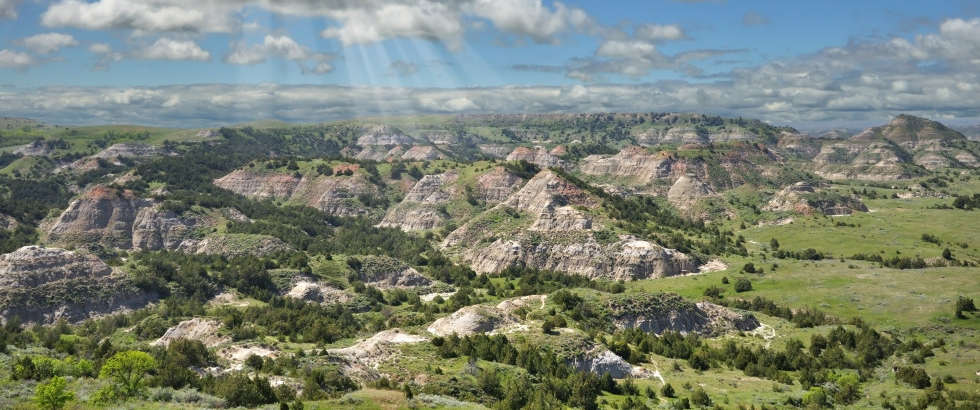
North Dakota, known for its wide-open spaces, vibrant communities, and robust economy, offers a high quality of life at a relatively low cost. Landmarks such as Theodore Roosevelt National Park, the North Dakota Heritage Center, and the International Peace Garden highlight the state's appeal. The state's economy is diverse, with significant contributions from sectors such as energy, agriculture, and manufacturing. North Dakota's tax structure includes moderate income and property taxes, which contribute to its overall affordability. Despite recent inflation and rising food costs, North Dakota remains one of the more affordable states in the central region, especially in its smaller towns and rural areas. The combination of a diverse economy and manageable living costs makes North Dakota an attractive place for those seeking affordability and quality of life.
Affordable living in North Dakota can often be found in smaller towns and suburban areas where housing costs and everyday expenses are lower. These regions provide a more manageable cost of living, which is essential for maintaining financial stability. Affordability is a crucial factor in livability, as it allows residents to enjoy a comfortable standard of living without undue financial strain. Factors contributing to the cheapest places to live in North Dakota include lower housing demand in less populated areas, supportive local economic policies, and efficient public services. Utilizing C2ER's cost of living data helps to identify these affordable regions, ensuring that potential residents can make informed decisions. In a state known for its community spirit and economic opportunities, finding affordable living options enhances the overall living experience.
| Rank | Location | Population | COL Index | Med. Home Value | Med. Household Inc. |
| 1 | Devils Lake | 7,302 | 86 | $114,200 | $39,248 |
| 2 | Wahpeton | 7,772 | 88 | $125,100 | $44,426 |
| 3 | Valley City | 6,393 | 90 | $136,300 | $51,734 |
| 4 | Jamestown | 15,216 | 92 | $151,100 | $49,846 |
| 5 | Grand Forks | 56,588 | 99 | $209,800 | $50,194 |
| 6 | Fargo | 123,550 | 101 | $225,500 | $57,520 |
| 7 | Minot | 47,834 | 102 | $211,000 | $64,401 |
| 8 | Mandan | 22,482 | 102 | $222,500 | $71,357 |
| 9 | West Fargo | 36,406 | 104 | $241,800 | $87,674 |
| 10 | Dickinson | 22,880 | 104 | $237,900 | $66,306 |
| 11 | Bismarck | 73,435 | 105 | $249,200 | $67,629 |
| 12 | Williston | 27,812 | 107 | $244,400 | $76,873 |
| 13 | Watford City | 7,146 | 112 | $283,000 | $75,000 |
| 14 | Minot AFB | 5,974 | 117 | $0 | $63,839 |
To formulate the list of the cheapest places to live in North Dakota, AreaVibes utilized comprehensive data from the Council for Community and Economic Research (C2ER) cost of living index. The report is released annually and offers a detailed comparison of living expenses across various urban areas. The data is meticulously gathered by over 300 independent researchers, ensuring a high level of accuracy and reliability. The C2ER index encompasses more than 60 goods and services, categorized into six essential areas that significantly impact the cost of living. These categories and their respective weightings in the index are as follows: goods and services (33%), groceries (13%), health care (5%), housing (30%), transportation (9%), and utilities (10%).
The map above is a great way to help you discover the most affordable states across the U.S. By highlighting states with the lowest cost of living, this map provides an in-depth look at where you can get the most value for your money. By visually representing this data, the map allows users to easily compare different regions and make informed decisions about potential relocations or investments. Additionally, it provides valuable insights into the economic conditions and lifestyle factors that influence these cost of living statistics. Whether you're planning a move, considering a new job, or simply curious about the economic landscape, this map is a useful resource for understanding and navigating the financial implications of living in different states.